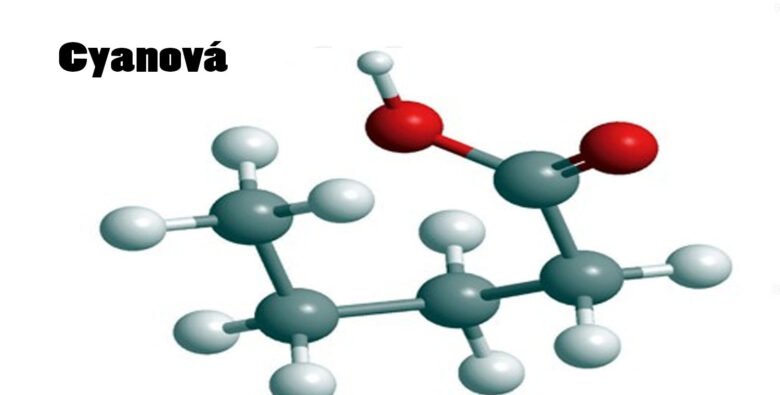Understanding Cyanová: Composition and Properties
Cyanová is more than just a striking shade of blue—it’s a fusion of chemistry, creativity, and cultural depth. At its core, Cyanová is a synthetic pigment derived from a mix of phthalocyanine compounds and organic stabilizers. Unlike conventional blues, Cyanová features a hyper-saturated appearance with both cool and radiant undertones, making it versatile across artistic mediums. Its high lightfastness and resistance to environmental fading have made it a favorite among contemporary painters, digital creators, and fabric designers. The pigment’s optical vibrance is further enhanced by its crystalline microstructure, reflecting and refracting light with multidimensional depth.
Trending Post : The Growing Role of Laser Dentistry in Modern Dental Care
Cyanová in Art Through the Ages
Though Cyanová is a modern invention, it draws upon a legacy of blues that dates back to Egyptian faience, lapis lazuli in Renaissance works, and indigo textiles. Historically, blue has symbolized spirituality, royalty, and transcendence. Cyanová carries this legacy forward, yet distinguishes itself through a technological edge. Since its formal introduction in late 20th-century European studios, Cyanová has evolved to become a symbol of innovation—appearing in everything from abstract canvas art to avant-garde installations. It bridges tradition and progress, embodying both ancient symbolism and futuristic ambition.
Color Theory: Cyanová’s Place in the Blue Spectrum
From a color theory perspective, Cyanová resides between cyan and cobalt blue. Its unique position offers both emotional balance and creative versatility. It doesn’t carry the cold detachment of pure cyan nor the heaviness of ultramarine. Instead, Cyanová energizes compositions with freshness while maintaining emotional resonance. On the RGB spectrum, Cyanová occupies values close to (0, 183, 235), lending it beautifully to screen-based design while still holding its own in print and textile. Designers praise Cyanová for being emotionally engaging—calming, yet invigorating—ideal for branding, interface design, and therapeutic art spaces.
Modern Applications of Cyanová in Contemporary Art
Contemporary artists have adopted Cyanová across diverse media, from oil painting to AR installations. Its synthetic stability allows it to maintain vibrancy even under extreme lighting, making it an optimal choice for gallery lighting, projection art, and light-responsive sculptures. Cyanová is also being used in kinetic art, holography, and spatial light modulators where color interaction is essential. Whether on canvas or embedded into digital displays, Cyanová serves as both a visual anchor and a narrative voice. Emerging creatives are also using it in street murals, bringing vivid, futuristic aesthetics to urban landscapes.
Masterpieces in Cyanová: Case Studies
One notable masterpiece employing Cyanová is Nebulae Silence by modernist painter Luca Rével, where Cyanová dominates the celestial background, evoking cosmic awe. Another powerful case is the Synthetic Dreamscape AR installation by Aiko Tan, which leverages Cyanová to layer interactive elements that change based on viewer movement. In both cases, Cyanová isn’t just a pigment—it becomes the emotional and spatial centerpiece. These works underscore how Cyanová can drive both thematic expression and technical execution in masterful ways.
DIY Techniques: Working with Cyanová
Cyanová is increasingly accessible for home artists and DIY creators. Available in both acrylic and water-based mediums, Cyanová can be mixed with gesso, poured in resin, or used with digital painting tablets. For physical projects, it’s recommended to use Cyanová on primed surfaces to maintain color integrity. Mixing it with titanium white or matte mediums can produce calming pastel gradients, while layering it with iridescent mediums can enhance its crystalline effect. Digital artists often use Cyanová as a base in UI mockups or mood boards for its futuristic yet organic look.
Cyanová in Digital Art and Design
In the digital domain, Cyanová has gained popularity as a go-to color for futuristic interfaces, minimalist web design, and immersive game environments. UX/UI designers are integrating Cyanová for call-to-action buttons, splash screens, and animated backgrounds due to its vibrant yet non-intrusive nature. Motion graphic artists use Cyanová to evoke themes of innovation, sustainability, and serenity. Augmented and virtual reality creators are also experimenting with Cyanová for simulated environments that require a balanced, immersive color atmosphere. It’s even trending in NFTs, often used to symbolize ethereal or cybernetic themes.
The Future of Cyanová: Innovations and Preservation
As Cyanová becomes a global design staple, manufacturers are pushing innovation in sustainable pigment production. Labs are exploring algae-derived variants and eco-resins that maintain the vibrancy without harming the planet. Meanwhile, museums and archives are investing in preservation techniques to ensure Cyanová artworks endure for generations—using non-yellowing varnishes and UV protection measures. Looking ahead, Cyan is poised to influence biotech-inspired art, smart fabric design, and synesthetic experiences that blend sound and vision through color frequency mapping.
Resources for Further Exploration
- Book: “The New Blue: Cyanová and the Digital Renaissance” by Dr. Elana Mirkov
- Website: cyanovacolor (a community dedicated to color lovers and pigment researchers)
- Courses: Digital Color Theory with Cyanová – offered by FutureVisual Academy
- Museum Collections: The Chromatic Future Exhibit – London Contemporary Color Museum
- Materials: Purchase Cyanová pigment sets at Blick Art Materials or ArteVerde Global Pigments
Conclusion
Cyanová is not just a pigment—it is a paradigm shift in how we engage with color in the modern world. From digital screens to ancient symbolism reborn, Cyanová captivates the human eye and mind, offering endless possibilities across artistic and technological domains. Its journey is only beginning, and its impact will continue to inspire future generations of creators.
FAQs About Cyanová
Q1: Is Cyanová a natural or synthetic color?
A: Cyanová is a synthetic pigment created for enhanced stability and vibrancy across media types.
Q2: Can I use Cyanová in oil painting?
A: Yes, many manufacturers now produce Cyanová-based oil paints that retain the pigment’s luminous quality.
Q3: Where can I see Cyanová artworks?
A: You can view Cyanová-based art in modern galleries and exhibitions like the London Contemporary Color Museum or through digital platforms like Behance and ArtStation.
Q4: What makes Cyanová different from cobalt or ultramarine blue?
A: Cyanová offers a brighter, more saturated tone with crystalline light reflection properties, setting it apart from traditional mineral-based blues.
Q5: Can Cyanová be mixed with other colors easily?
A: Yes, it blends well with whites, purples, and greens, and can be used to create futuristic gradients and soft blends for both physical and digital art.



